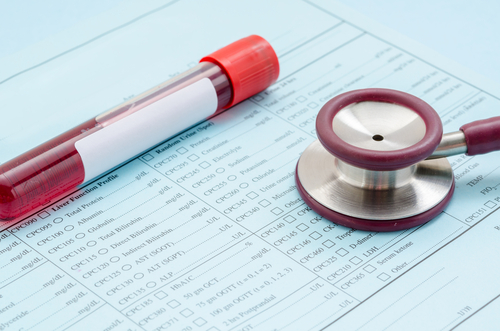Uric Acid Levels in Blood Predicts PAH Risk and Outcomes in Scleroderma Patients, Study Reports

Higher than usual serum levels of uric acid are linked to a greater risk of pulmonary arterial hypertension (PAH) among people with scleroderma, according to new research.
Its findings also showed an association between higher levels of this blood biomarker and both disease severity and mortality in scleroderma-associated PAH (SSc-PAH) patients.
The study, “Serum uric acid as a marker of disease risk, severity, and survival in systemic sclerosis-related pulmonary arterial hypertension,” was published in the journal Pulmonary Circulation.
PAH can be a common complication of scleroderma, but strategies for optimal screening and determinations of likely progression are still lacking.
The international DETECT study (NCT00706082) found that serum levels of uric acid predicted SSc-PAH in high-risk patients with scleroderma. Based on this finding, a team from Johns Hopkins University hypothesized that, besides predicting PAH risk, measuring uric acid levels could also be a way of determining disease severity and survival.
A total of 162 adult patients (mean age of 61; 80% women, 88% Caucasian) were included in the Hopkins analysis, and all underwent right heart catheterization (RHC; the gold standard for PAH diagnosis) between January 2005 and September 2017. Among these people, 112 had pulmonary hypertension (PH), most of whom (82 patients) had PAH.
Results showed higher median uric acid levels in patients with PH than in those without it — 6.7 vs. 5.15 mg/dL. People with PH also had more evidence of hypertension (40%), diabetes mellitus (11%), and coronary disease (7%) than did participants without PH.
Uric acid levels in PAH patients, in particular, were also higher than in those without PH — 6.9 vs. 5.2 mg/dL. According to the team, an increase of 1 mg/dL in uric acid levels raised the likelihood of developing PAH by 51%. Levels above 6.2 mg/dL corresponded to a four-fold greater risk of PAH than values under this threshold.
Importantly, measures of uric acid showed a similar ability to detect PAH as two known markers: N-terminal pro-BNP (NT-proBNP) and percent predicted diffusing capacity for carbon monoxide, which tests the lungs’ capacity to transfer oxygen from the air sacs into the blood. According to the team, using uric acid determinations along with these screening markers significantly improved PAH prediction.
Data also showed that, among PAH patients, uric acid levels at baseline — within two weeks of RHC — correlated with cardiac function parameters such as mean pulmonary arterial pressure (mPAP), pulmonary vascular resistance (PVR), and cardiac index — a measure based on cardiac output, the amount of blood pumped by the heart.
Levels of this biomarker were also associated with the amounts of NT-proBNP and creatinine, an indicator of liver function.
Higher uric acid levels were also linked to greater disease severity, as assessed by the 6-minute walk distance of exercise capacity, and right atrial pressure — the pressure in the heart’s right upper chamber.
Over a median 49 months of follow-up, 77 (48%) of these patients died; included in this group were 62 people with PH, of whom 48 had PAH.
According to the team, a 1 mg/dL higher level of uric acid was associated with a 14% increase in mortality. Further reflecting the higher levels seen in patients who died than in survivors (6.6 vs. 5.6 mg dL), uric acid levels higher than 6.3 mg/dL were significantly associated with an increased mortality risk, even after accounting for potential confounders such as age, sex, and treatment differences.
“Taken together, our results suggest that serum [uric acid] is a valuable biomarker in the non-invasive assessment of disease risk, severity, and outcomes in SSc-PAH,” the researchers wrote.
“Future studies are needed to confirm these results in larger populations of unselected, asymptomatic SSc patients,” they added.






